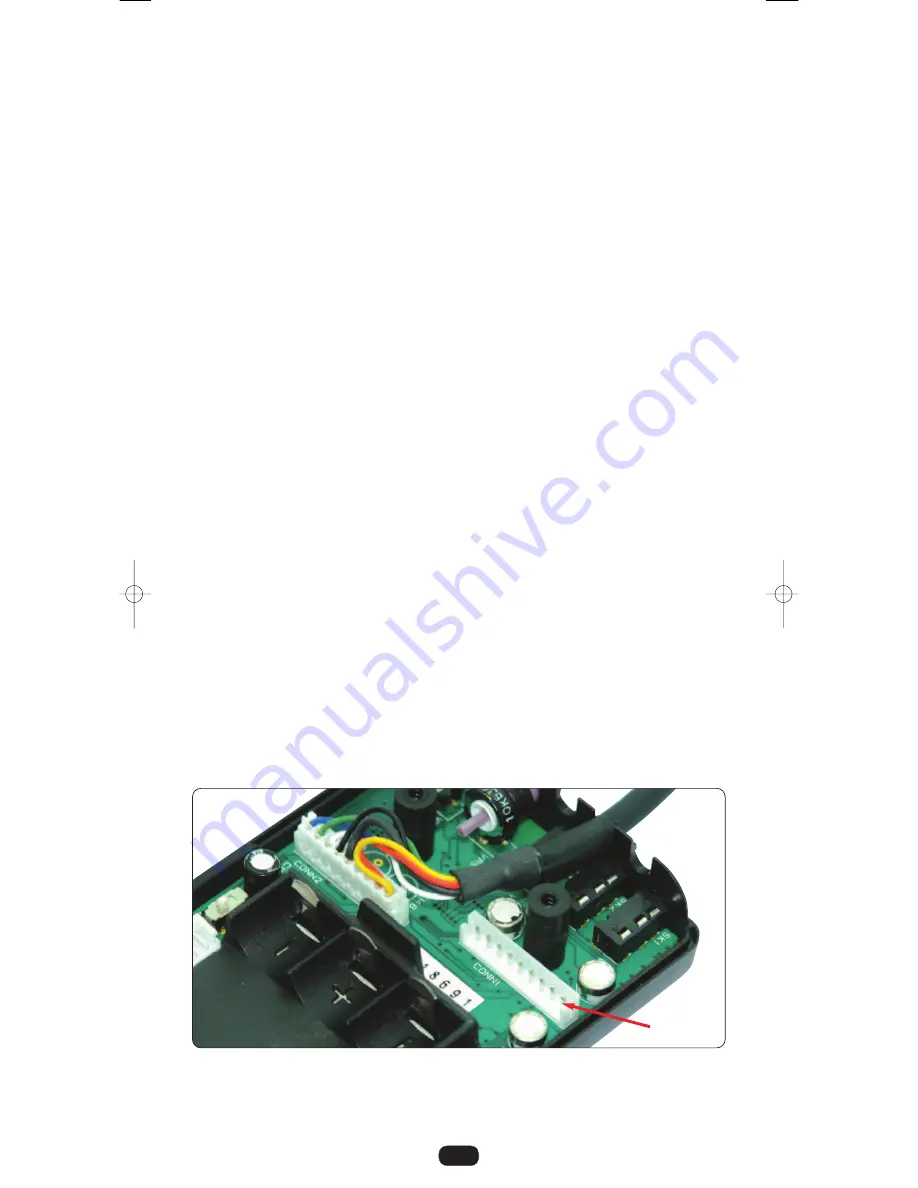
13
Connecting one of the bike-to-bike radio’s to your system
Remove the battery cover and batteries from one of your hubs and then remove the two Pozi-Drive
screws from the hubs small back cover, allowing it to be removed. NOTE you should lightly press down
on the battery tray while carefully lifting the small back cover off. This then reveals the Aux 1 (CONN
1) white 9 pin connector on the main circuit board.
Carefully break off the blanking tab from inside the small back cover (the outer of the two, which
previously covered one of the slots in the front panel) and then orientate the interface leads white
connector so that the red wire is towards the centre of the hub, before carefully aligning the pins and
pressing the connectors together.
Carefully position the interface lead around the outside of the nearby black fixing pillar and push the
interface lead into the front panel slot (the outer one) so that the strain relief sleeving is inside the front
panel.
Before replacing the small back cover, push the wires down so that they will not be trapped between
the black pillar and small back cover when it is replaced. With the small back cover in place, check
alignment around the front panel etc before replacing the two Pozi-Drive screws. You can then replace
the hubs batteries and battery cover.
Connect the interface leads plug to the radio, making sure it is fully plugged all the way in (fit the
retaining clamp if one is provided with the radio) and turn the radio on to about 50% volume.
When you speak into your systems microphone and activate the hubs VOX (your own side-tone
confirms this for you) the other radio should receive your speech and they can then adjust their hand
held radios volume to a suitable level.
Please use this setting as a guide to set the volume on the radio
connected to your hub, BEFORE getting the other person to transmit back to you using their hand held
radio, and then when they transmit back to you, you can readjust your radios volume if required.
Your will notice two important things happening
which you have to understand and get used to
working with in order to perfect using the system.
1) When you speak and activate your VOX it instantly switches on (as confirmed by your own side-
tone) and the VOX simultaneously switches your bike-to-bike radio from standby or receive mode,
into transmit mode. (If your radio has a transmit L.E.D. or indicator you will notice this activates
almost instantly when you speak and operate your VOX).
There is unfortunately a short delay
between when this happens and when your speech is actually
heard through the other radios speaker. This is because after receiving your transmission, the other
radio has to switch between battery saving/standby mode into receive mode and then check and except
the anti-interference tone code before allowing the sound to be amplified through the speaker. The
result of this short delay is that when you say something like
“left at the lights”
it may be heard as
“at the lights”
to which the reply is
“what about at the lights”
, which is heard as
“about at the
lights”
, I think you get the message (which is that you won’t) so to get over this you must get used
to always using a KEY WORD, (like you will hear professionals such as the police use) for example;
“OK… turn left at the lights, OVER!”
this key word and a short pause will ensure that your intended
radio transmissions are heard in full, likewise by saying the word OVER the other person then knows
you have ended your transmission and after a second or two your VOX will then switch your radio from
transmit back to receive.
2) When you stop speaking there is a (deliberately designed) short delay before your VOX switches
the radio back from transmit mode to receive mode. This delay is the
best compromise
between;
staying on as long as possible
to help prevent any pauses during normal conversations causing
the system to think you have stopped speaking and returning the radio back to receive mode
halfway through your conversations; and;
as short as possible
so that when you do actually stop
speaking, the delay time for your radio to stop transmitting and return to receive mode is minimal,
so that the other bike/s can then transmit back to you as quickly as possible.
Aux 1
Always power off your systems before connecting or disconnecting auxiliary leads.
If you bike power your hub, you will need isolation audio interface leads if using bike powered audio
devices.
Kit LIW Instructions.qxd 5/6/09 2:03 pm Page 13
















